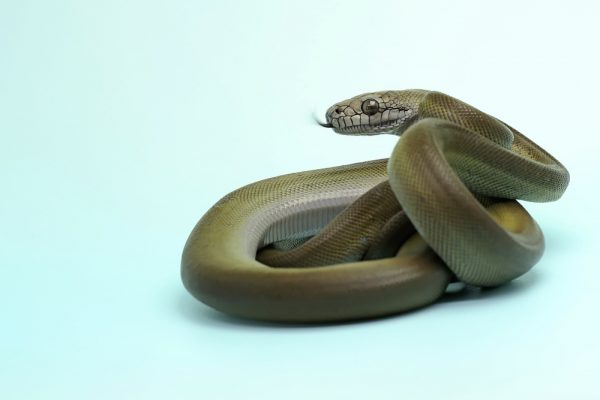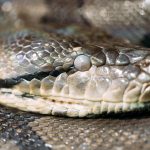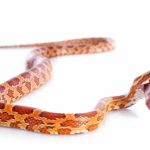A snake’s sense of smell is among the most powerful in the animal kingdom, and it can detect a single drop of blood from more than a mile away.
This article will explore the scent-tracking capabilities exhibited by snakes on different continents, as well as other related questions about the capabilities of this phenomenon.
Snakes are able to detect a single drop of blood from more than a mile away; they can smell a mouse or rat from several yards away. Their sense of smell is acute indeed, and it’s not just blood that they can smell – almost anything will betray its presence to them.
Snakes have no external nares (nostrils), but instead, have two small holes near the edge of their upper jaws. These are connected to smell-sensitive cells in a depression at the back of their mouth, between the eye and the upper jaw. When a snake is hunting, it raises its head and opens its mouth, drawing air in through these two holes and over its Jacobson’s organ.
How Good Do Snakes Smell?
Snakes do not have external noses and instead track prey by detecting molecules carried by air currents. As a consequence, snakes are able to smell far and are capable of tracking prey that has been moved. Snake species living in hot regions possess larger olfactory bulbs, which allows them to detect prey sooner than species found in cooler climates.
Can Snakes Smell Mice?
Yes, snakes can detect mice when they are near. These animals have a highly developed sense of smell that enables them to find prey by detecting molecules carried by air currents. As a result, they can track prey that has been moved and have a much better chance of survival than those that hunt on the ground. This ability is considered very valuable for the snake when hunting.
Can Snakes Smell Far?
Snakes have no external nares (nostrils), but instead, have two small holes near the edge of their upper jaws. These are connected to smell-sensitive cells in a depression at the back of their mouth, between the eye and the upper jaw. When a snake is hunting, it raises its head and opens its mouth, drawing air in through these two holes and over its Jacobson’s organ.
The Jacobson’s organ is a scent receptor that detects molecules carried by air currents. The snake then uses this information to track its prey and strike. The sense of smell of the snake is much more acute than that of a human and can detect a single drop of blood from more than a mile away.
In fact, one study found that the accuracy of the sense of smell was so great that if an injured animal were left out in the open it would almost certainly be detected before it died.
Are Snakes as Good at Smelling if They Are Blind?
Snakes mainly use smell to detect prey and they can smell a single drop of blood from more than a mile away, and since olfactory bulbs are located right next to their brains, the information is almost instantaneously processed. This mean they don’t really rely on their sight.
Snakes do not have external noses and instead track prey by detecting molecules carried by air currents. As a consequence, snakes are able to smell far and are capable of tracking prey that has been moved. Snake species living in hot regions possess larger olfactory bulbs, which allows them to detect prey sooner than species found in cooler climates.
Can Snakes Smell The Prey That Is Far Away?
The sense of smell of a snake is much more acute than that of a human and can detect a single drop of blood from more than a mile away. This is because their olfactory system is located very close to the brain and they are able to process this information almost instantly.
Do Snakes Have Both Ears And One Nose?
Snakes have no external nares (nostrils), but instead, have two small holes near the edge of their upper jaws. These are connected to smell-sensitive cells in a depression at the back of their mouth, between the eye and the upper jaw.
When a snake is hunting, it raises its head and opens its mouth, drawing air in through these two holes and over its Jacobson’s organ.
Can Sea Snakes Swim Faster Than Other Snakes in Water?
Sea snakes are exceptional swimmers, showcasing incredible agility and speed in water. Thanks to their flattened tails and bodies, they move swiftly through aquatic environments. With their side-to-side motion, it’s fascinating to observe how sea snakes swim in water, effortlessly propelling themselves forward. Their unique adaptations grant them an edge over other snakes when it comes to aquatic locomotion.
What Is The Fastest Snake In The World?
The fastest snake in the world is the Black Mamba, found in Africa. It can reach speeds of up to 12 mph (20 km/hr). Other snakes that are fast include the Asian Rat Snake and the Western Diamondback, both of which can achieve speeds of over 8 mph (13 km/hr).











